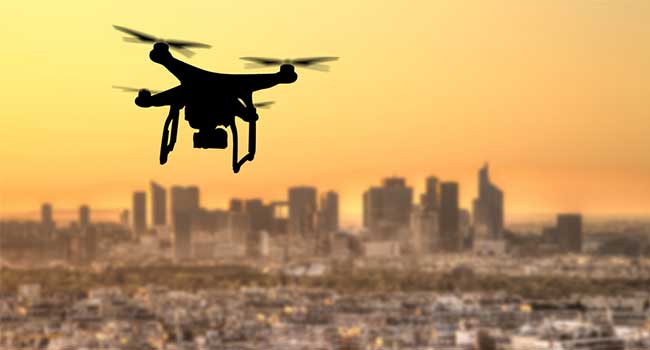
Understanding the Drone Threat
For security professionals, the scope of the threat is huge and evolving.
- By Steve Tomaselli
- Nov 19, 2018
Last summer, fans at a San Diego Padres baseball game caught a glimpse of the future when a drone crashed into the stands. Thankfully, the operator was a hobbyist who had lost control of his drone and nobody was hurt. But the incident highlighted the drone threat, both in terms of a potential physical attack as well the capability to gather video surveillance and livestream it online, where malicious actors can exploit that footage in a number of ways.
In a recent report, Goldman Sachs estimated that the total drone market could reach $100 billion by 2020. And while we tend to think of drones as tools for the military, commercial aviation and hobbyists, the reality is that drones play significant roles in every sector of the economy, from agriculture to entertainment and everything in between. For security professionals, the scope of the threat is huge and evolving.
Any space that is accessible via drone requires a counter-drone protection plan to detect and mitigate potential airborne threats. These spaces can include sporting stadiums, critical infrastructure, airports, production facilities, prisons and executive offices, to name just a few. As a general rule, if you can see the sky, you need to assume that a drone can see you and assess the potential threat accordingly.
A drone security plan should include at least three components: radar detection, physical defense and open-source monitoring. Radar detection and physical defense systems, such as radio jammers and drone cannons that capture drones by launching a net projectile, provide a great solution to mitigate imminent threats. This is critical because as 2015 incident illustrates, a tech-savvy teenager figured out how to mount a handgun to a drone and fire it remotely. Had that weaponized drone been directed at a commercial, residential or industrial target, it surely could have caused significant casualties.
But radar and physical defenses don’t address the online threat. By monitoring for drone-related chatter on the internet, both on the indexed and dark web, security professionals can deploy proactive and reactive solutions to protect physical locations as well as intangibles, such as trade secrets or brands.
To get an idea of just how pervasive the online drone threat is, try searching for “drone footage” on YouTube. Each day, hobbyists upload countless videos. In most cases, those hobbyists are simply having fun, but what they don’t realize is that they’re also creating a treasure trove of intelligence for malicious actors.
Aerial footage of an industrial facility could easily be a goldmine for corporate espionage. Footage of an outdoor shopping space might look cool to most viewers, but to a would-be mass-shooter, that same footage becomes an invaluable tool for planning their attack. And while brands work hard to present a pleasing street-view of their brick-and-mortar locations, the aerial view might not comport with the message the brand wants to put forward, making drone footage a real, but often overlooked, threat to brand safety.
Consider the Padres example again. As it turned out, the hobbyist was making videos of the San Diego area. But a livestream could’ve been used any number of ways. On the mundane end of the spectrum, the opposing team could’ve used that footage to their advantage. On the serious end of the spectrum, a terrorist could have used the footage to direct an attack. And somewhere in the middle of the threat spectrum, that footage could’ve compromised the team’s brand. The simple fact is, drones aren’t going away. And while security professionals can readily see the need for local physical defenses, open-source monitoring is an essential tool for discovering and understanding the range of threats posed by drones.